Our Blog - Paris January 2018 - Day 3
The first Sunday of every month in France, a set of museums are free. We try to take advantage of this every month in Toulouse, and it just happened (we didn't actually plan the vacation around this) that we were in Paris on the first Sunday of the month. So we wanted to try to go to a set of museums that we really hadn't been to before. We started at the Musée des Arts et Metiérs, covering industrial design, scientific instruments, inventions, craftsmanship, etc. It is housed in the Priory of Saint-Martin-des-Champs, which was an influential monastery. The surviving buildings are considered treasures of Medieval architecture in the city.

We caught one of the last days of the exposition "Les Meilleurs Ouvriers de France", or The Best Craftsmen of France. The "MOF" competition was launched in 1924 to promote the work and ingenuity of workers and craftsmen. This exhibition showcased artisans and their creations. Some were old artifacts used in a variety of crafts, but also had an interesting short movie which showed a variety of these MOFs working ... woodworking, clockmaking, glassblowing, etc. An example of the historical items were these samples of wood stain used by cabinetmakers in the 1870's to imitate wood from China and Japan that was very much in fashion at that time. These specific samples came from Tugot Frères (the Tugot brothers) from 1878.

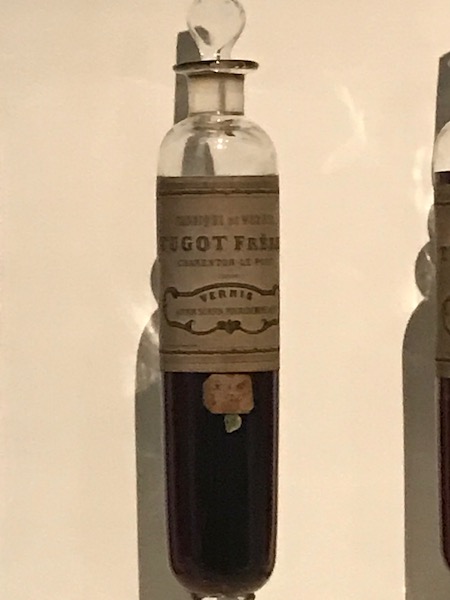
This is a cabinet of tools from the 1880's, also for a cabinetmaker. It contains more than 200 tools from a compay that was active from the 1860's until the 1930's.
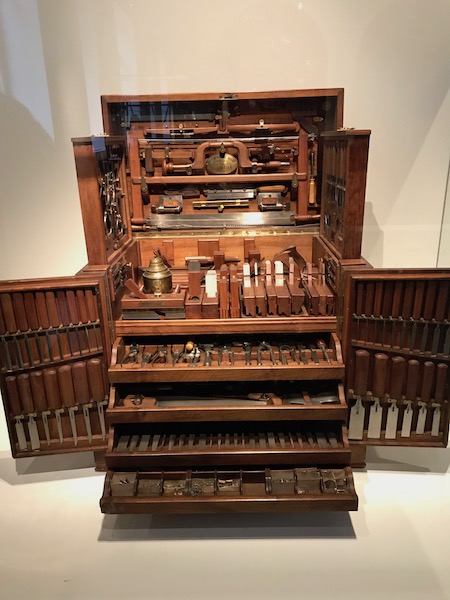
They also had a set of stained glass, which (if you read my blogs) you know I absolutely adore. These were created by Richard Burgsthal between 1912 and 1938
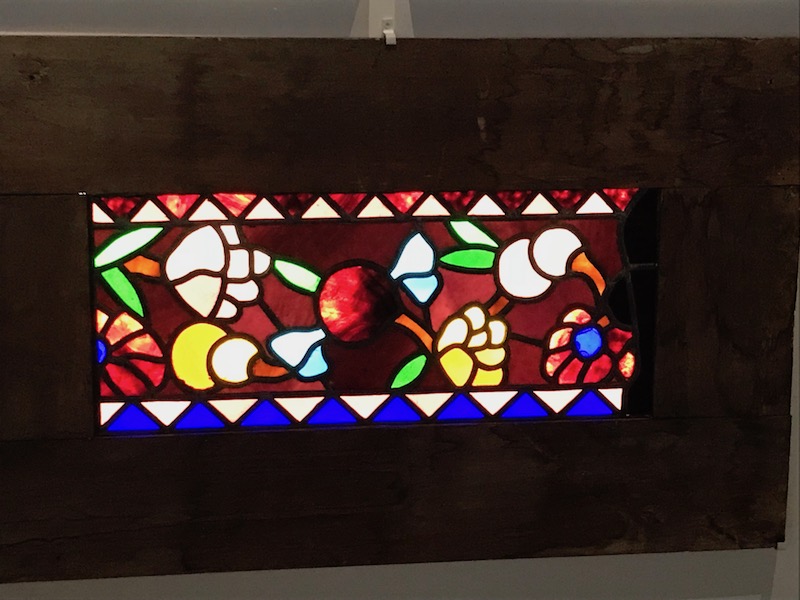
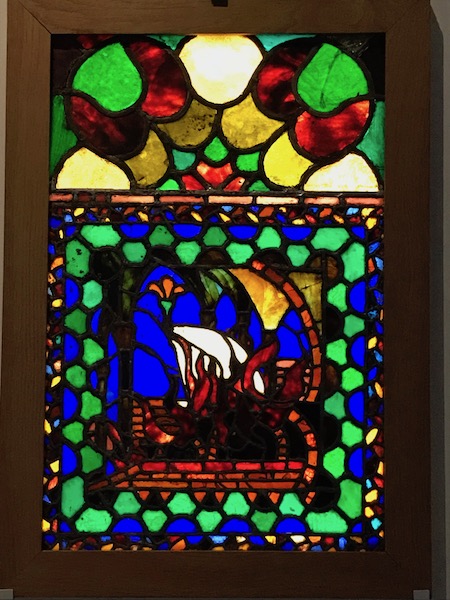
Here are a couple amazing knives, created by Jerome Lamic. The sign indicated that it took more than 1,000 hours of work to create these two knives.
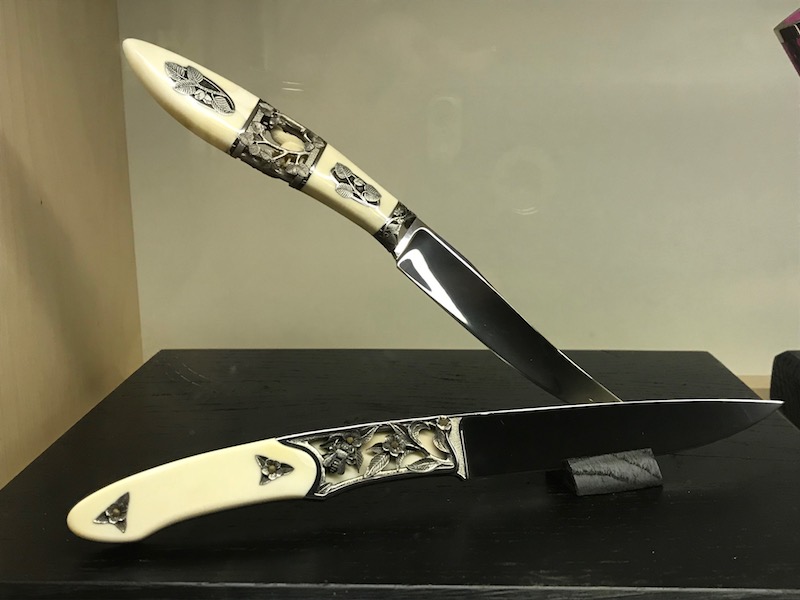

Here is Tom next to a Serpollet steam tricycle from 1888. While the first steam tricycle was created in 1769 for hauling artillery, it failed to meet the Army's criteria and nothing really happened with them until the 1880's. Léon Serpollet constructed a coal-fired steam tricycle, with the "steam generator" mounted between two rear wheels. Unfortunately, it turned out to be inconvenient, heavy, and relatively unreliable and so while there were some, the steam tricycle didn't take off.
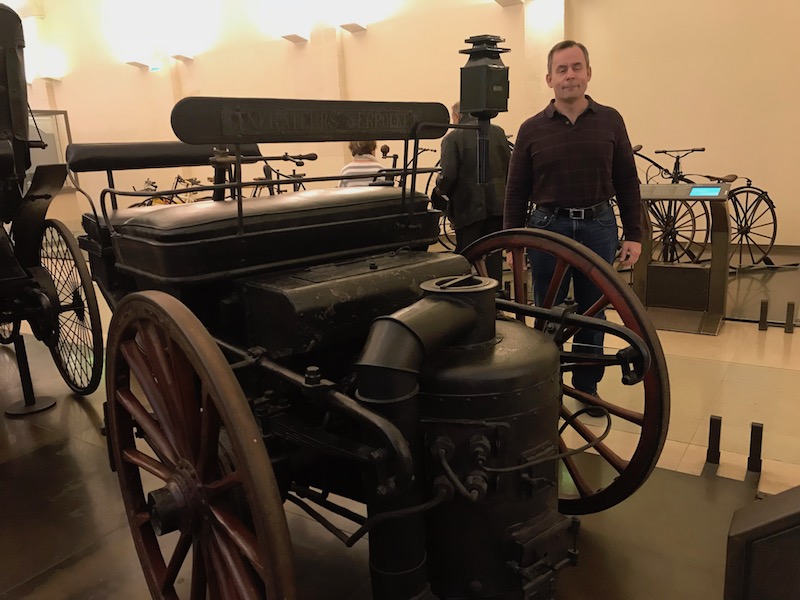
There was also a display of various bicycles dating from the 1865 swan-neck framed vélocipède Michaux, to the grand-bi (with a huge front wheel, which increased the distance covered for a single pedal revolution) from 1887, to a 1980's Peugeot mountain bike.

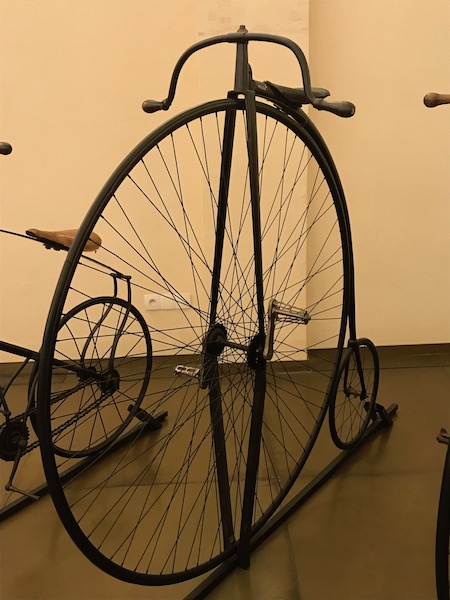
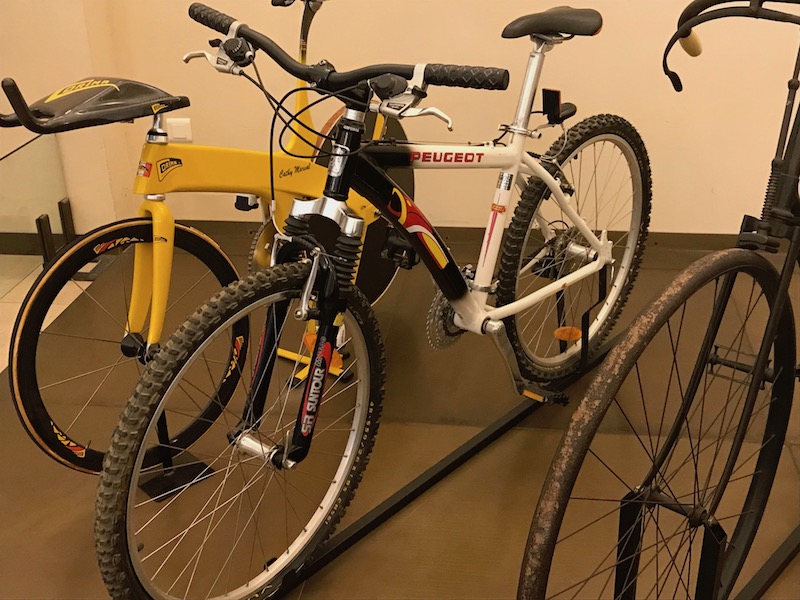
Within what used to be the chapel of the monastery, they had a set of various planes hanging from the ceiling. The oldest one, dating to 1906, was invented by Robert Esnault-Pelterie, who was an aviation pioneer. Unlike the planes of that time, he designed a monoplane with a metallic framework, and two simple flight controls (one for stability, one for steering).

Next came Louis Bleriot in 1909 with this plane. He had already made his fortune manufacturing car headlights, but became fascinated by aviation. After several failures, he finally succeeded with a light, solid, and reliable airplane. He made history on July 15th, 1909, by becoming the first man to fly from France to England over the English Channel.
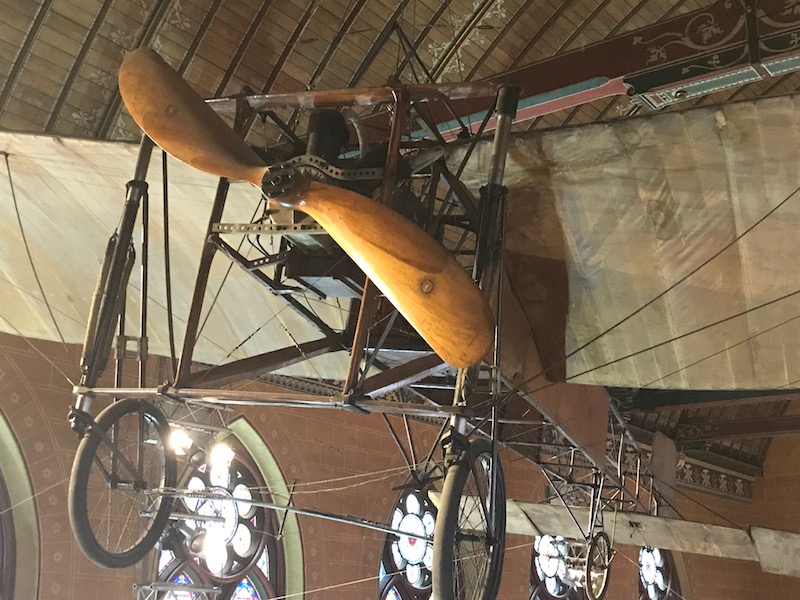
Finally, in 1911, came this plane from Louis Breguet, which made the first long-distance flight in Morocco, flying from Casablanca to Fez.

From the dome of the chapel hangs a Foucault pendulum. In 1851, French physicist Léon Foucault created an experiment to demonstrate the Earth's rotation in the Panthéon in Paris. The pendulum was moved to this museum in 1855. The trajectory of the pendulum does not change even though the point of suspension turns. In the original experiment, a stylus left a trace of the path in a bed of sand, which after a few minutes, started shifting. With this pendulum, pins at different positions in a circle are knocked down as time elapses and the Earth rotates underneath the swinging pendulum. You can see the ball of the pendulum in the first picture under and to the right of the white paper that the older woman is holding and then in the 2nd, you can see that it has swung over and knocked down the pegs.

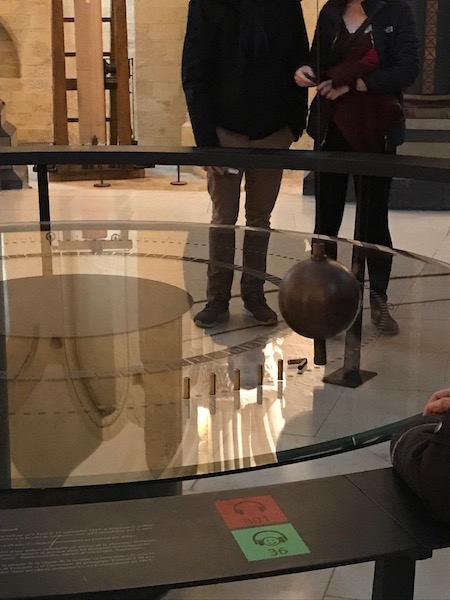
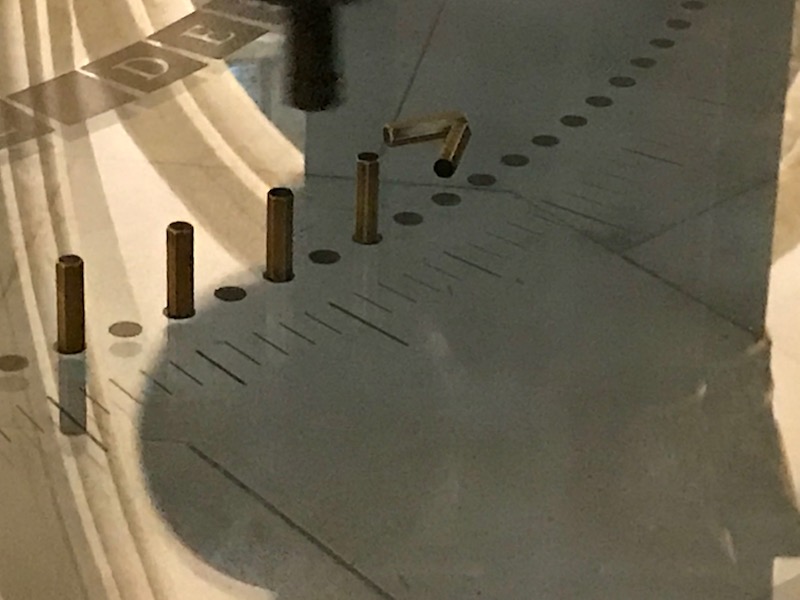
We then headed to a section that had famous scientific instruments including a 6-figure calculating machine created by Baise Pascale in 1642 (first picture) when he was 19 years old to assist his father who was a tax assessor.

They also had displays that had various measure devices from ancient times. Sometimes you don't really think about how they came up with how long is a meter ... or how much water is contained in a liter. For those of you who are interested ... a meter is defined as the length of the path travelled by light in a vacuum in 1/299 792 458 second. How is that for an obscure measure! These are a series of 5 measuring standards for grain from between 1670 and 1675.
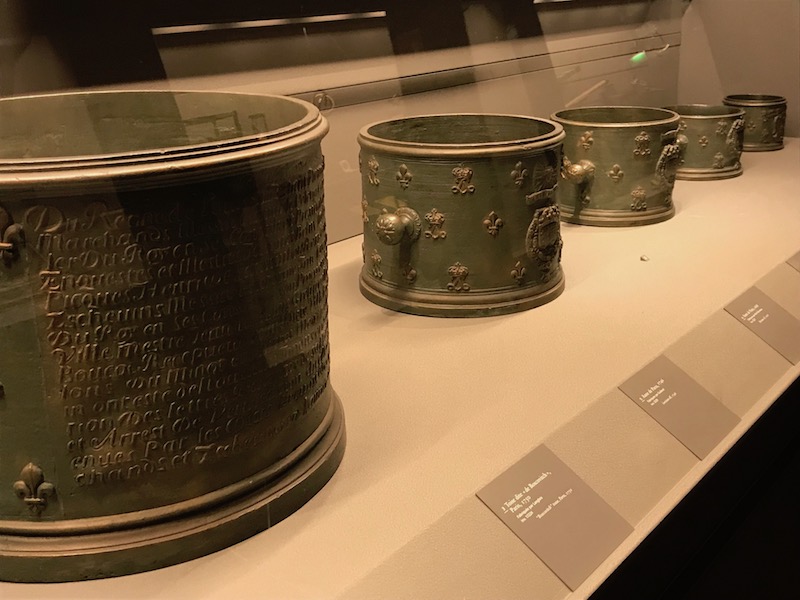
There was also a display which had a reproduction of the laboratory of Antoine Lavoisier. He was a famous chemist from the 18th century who is considered the father of modern chemistry. His experiments around mass require an unprecedented precision in measurements and therefore, he created a new set of weighing scales.
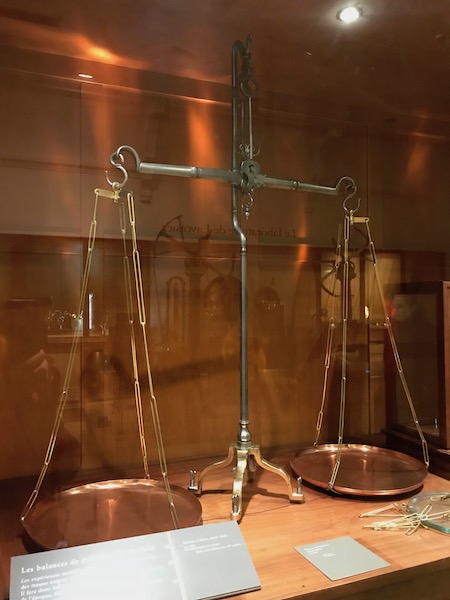
This will be interesting for all of my IBM colleagues .... they have an IBM Stretch 7030 computer, from the Stretch project in 1961. Supposedly there were only 8 of them built, and this one was used by the Atomic Energy Commission between 1963 and 1973 for research on nuclear energy. It has a large magnetic central memory and had many innovative features that found their way into future commercial success series, like the IBM 360 series.
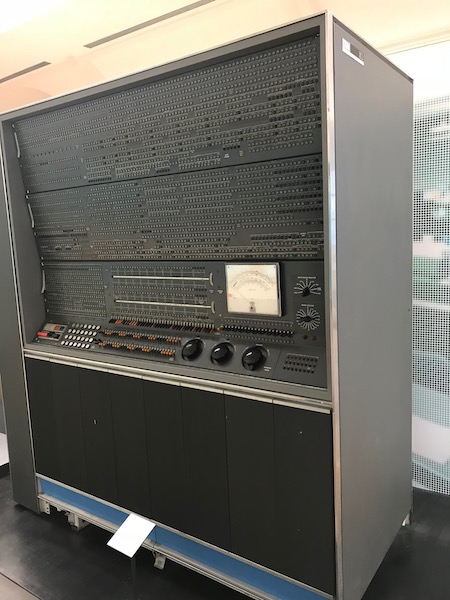
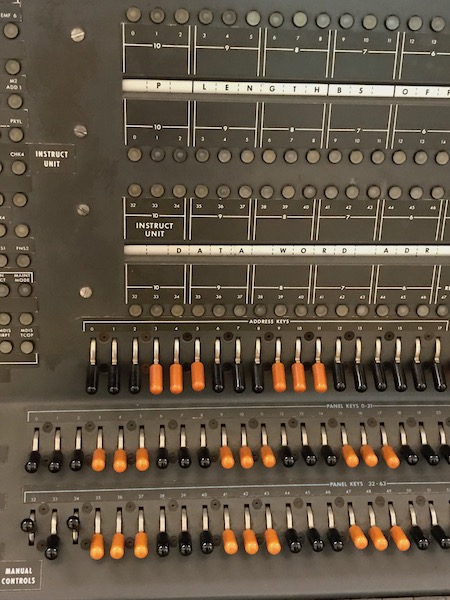
The LAMA robot was created in the 1990's in St. Petersburg Russia but later acquired by Alcatel Space Industries. It was designed to move around autonomously on the surface of planets. LAMA stands for Lavochkin Alcatel Model Autonomous. It contains a set of instruments including a gyroscope, an inclinometer, and several cameras.
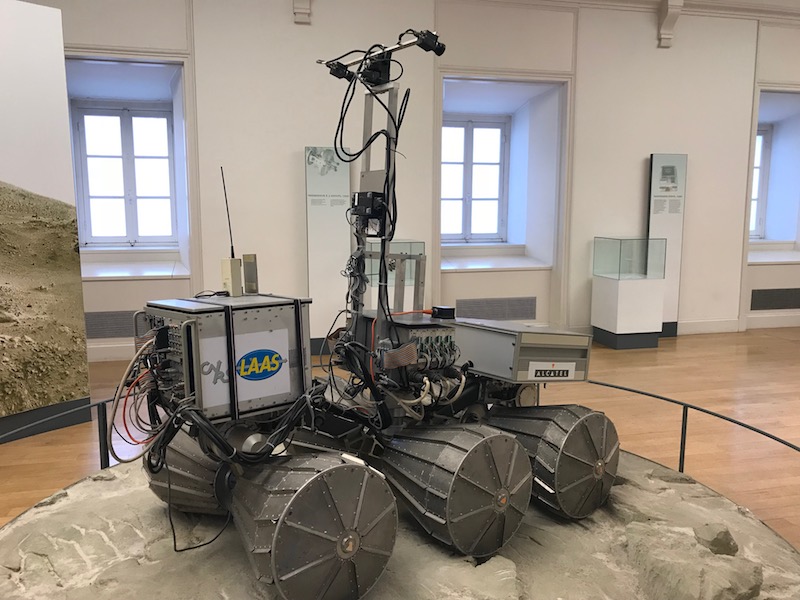
Then we were off to lunch, trying another restaurant on the "Best of" list. This time, it as the best "sausage and taters", and we ended up at L'Ambassade D'Auvergne. We started with a warm green lentils salad with bacon strips (the recipe dates back to 1966) and then finished with Country sausage & Aligot. Auvergne is a region within France just North of Haute-Garonne (the department where Toulouse is). It is known for its mountain ranges and dormant volcanoes, and from a food point of view, it is famous for its lentils (Le Puy lentil vert), Aligot (a dish made from mashed potatoes, garlic, and specific types of cheese) and Truffade (also another potato dish made with thinly sliced potatoes cooked in goose fat and Tomme Fraiche cheese).
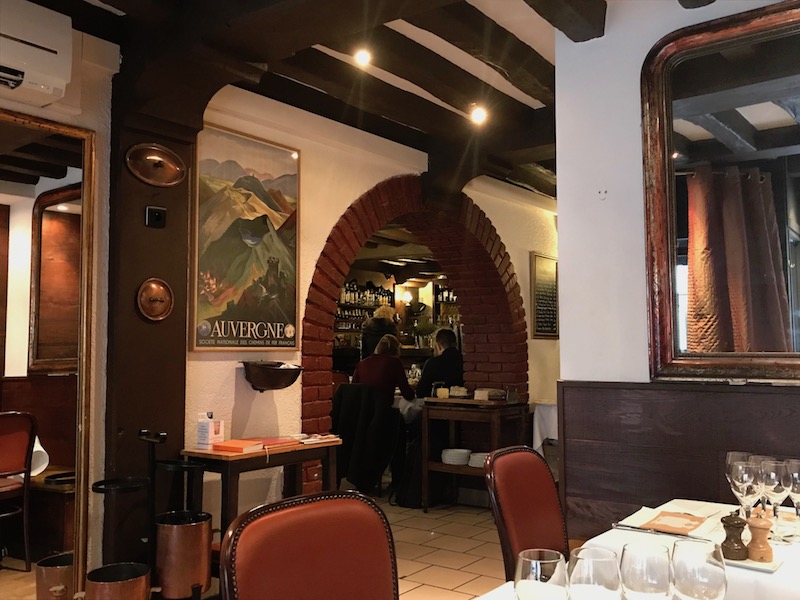
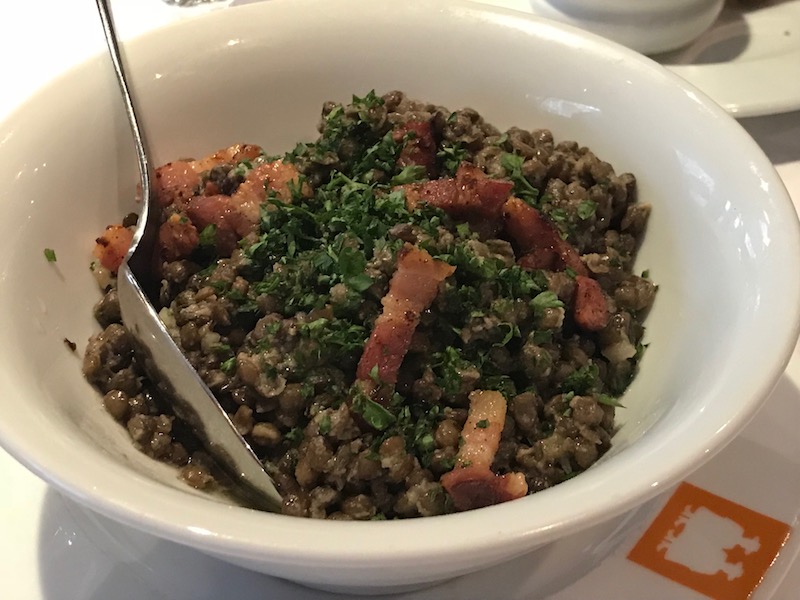

After lunch, we headed to another museum that was free ... the Pompidou Center. When we lived in Paris, I had lunch almost every week at a restaurant in the shadow of the Pompidou Center, but never went in. It is a very unique building where the structural elements are color-coded and, in general, on the outside. The escalators are all on the outside of the building, which also gives great views ... while the weather was not really great, you can make out Sacre Cour in the distance on the hill, all of the tall skyscraper buildings of the La Defense area where Tom worked when we lived in Paris, the Eiffel Tower, the bell towers and spire of Notre Dame, and the Tour Saint-Jacques.
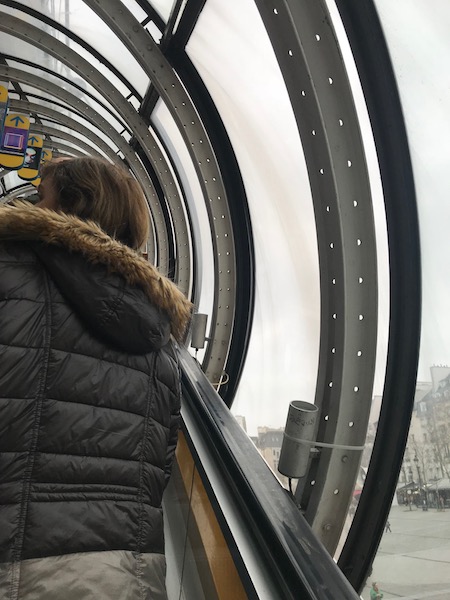

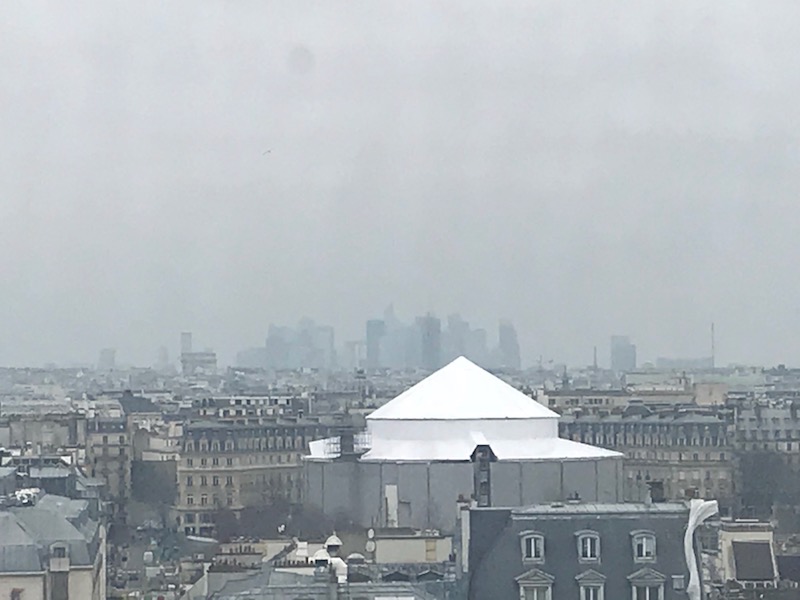
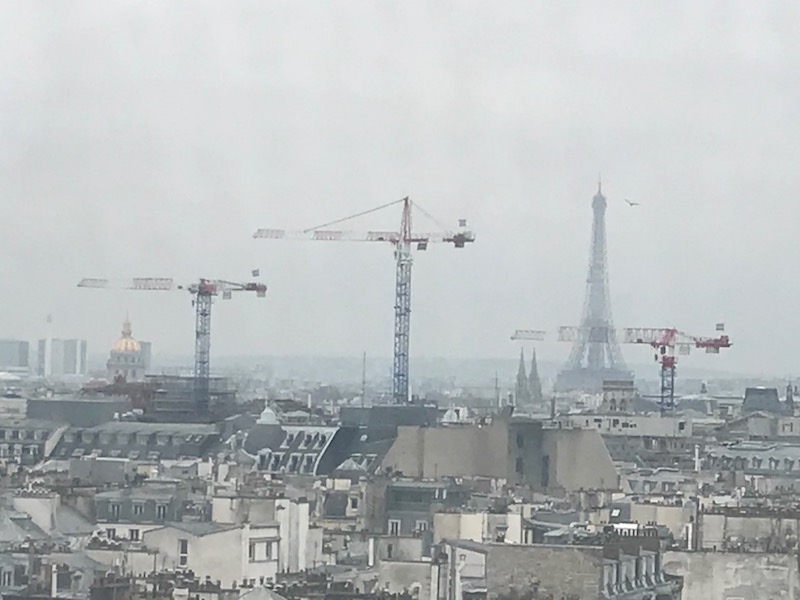

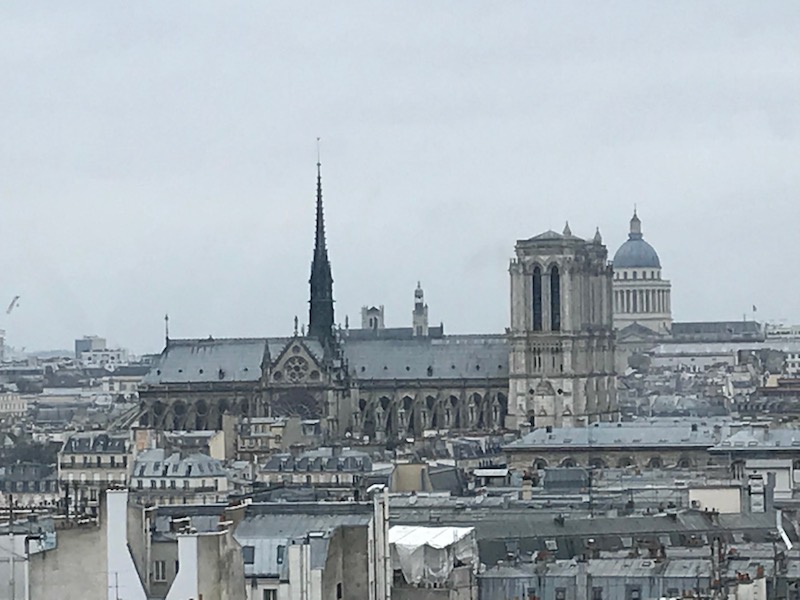
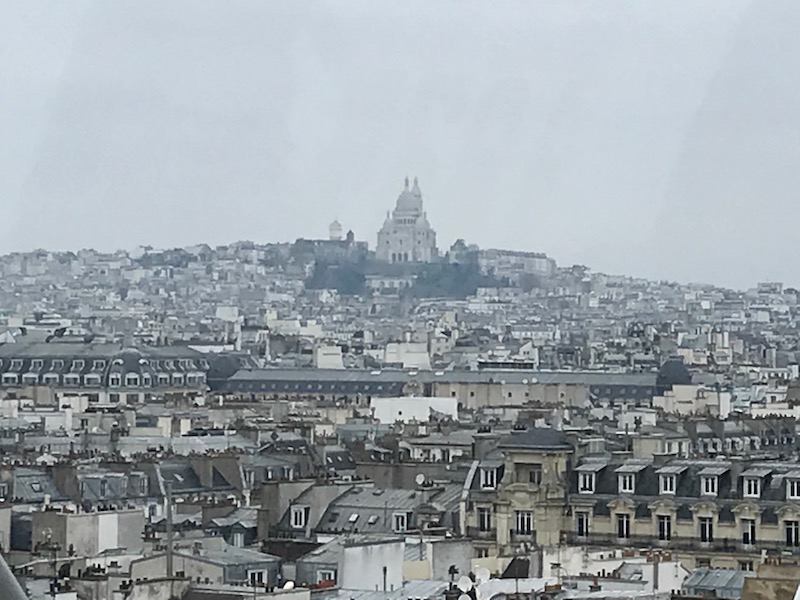
Now we move inside ...it houses several things, the main thing being the Musée National d'Art Moderne (Modern Art Museum). What we have figured out is that, in general, we only like art up to about the 1960's! Susan specifically is a big fan of Pointallism, Fauvism, Neo-Impressionism, and Cubism. This painting, entitled "Luxe, Calme, et Volupté" was painted by Henri Matisse in 1904 after spending a summer in St. Tropez alongside neo-impressionists Paul Signac. This uses the divisionist technique advocated by Signac, although he abandoned the technique the following year and became on of the pioneers of Fauvism. Here you can clearly see the large, cube-like brushstrokes that are indicative of the Divisionists. This is similar to Pointillism (which uses small distinct dots of color to form an image).

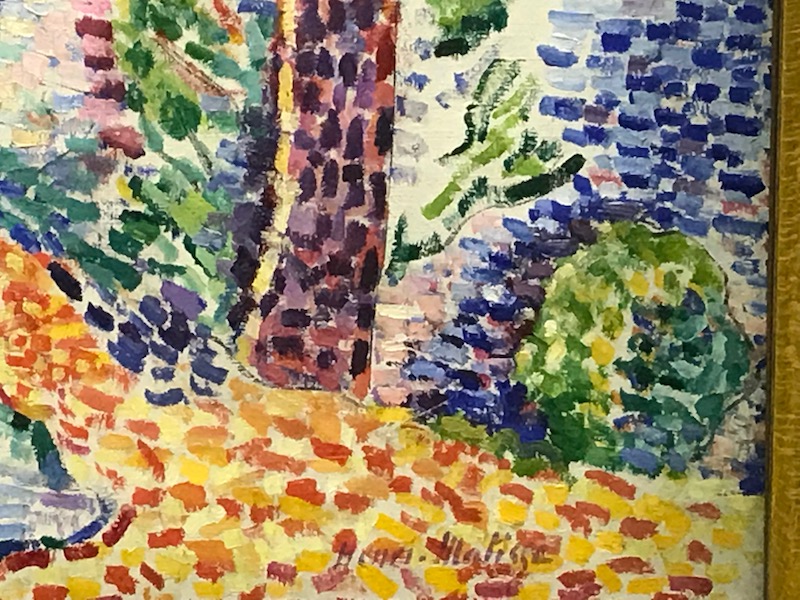
Another painter that Susan likes is Marc Chagall. I remember the lines from the movie Notting Hill where they discuss Chagall ... Anna Scott has a Chagall on her wall and William (Hugh Grants character) asks if she likes Chagall .. she responds that she does, because "It feels like how being in love should be. Floating through a dark blue sky.". William then adds "With a goat playing the violin." ... and Anna then says "Yes - happiness isn't happiness without a violin-playing goat.". While there is no violin-playing-goat in this Chagall, entitled Double Portrait with a Wine Glass, it is still a lovely painting which celebrates Chagall's marriage to Bella, whom he married in Russia in 1915. She is shown in a wedding dress with a low neckline.

Next up, Cubism, which was invented by Pablo Picasso and Georges Braque between 1907 and 1914. In Cubist artwork, objects are analyzed, broken up and reassembled in an abstracted form—instead of depicting objects from a single viewpoint, the artist depicts the subject from a multitude of viewpoints to represent the subject in a greater context. A couple great examples from Picasso include his 1910 painting entitled Woman seated on a chair, the 1914 "Portrait of a young woman" and the 1956 "Women in front of the sea".
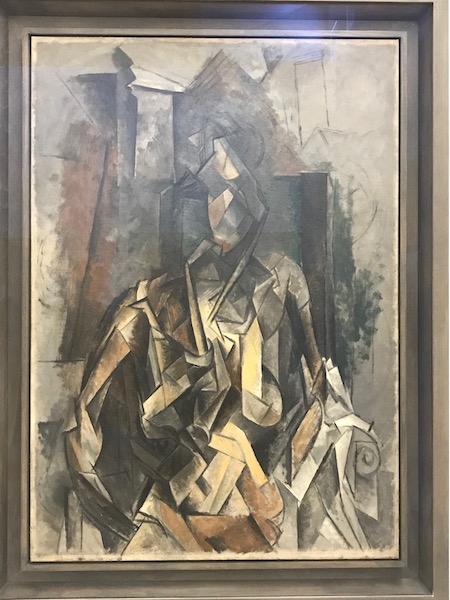
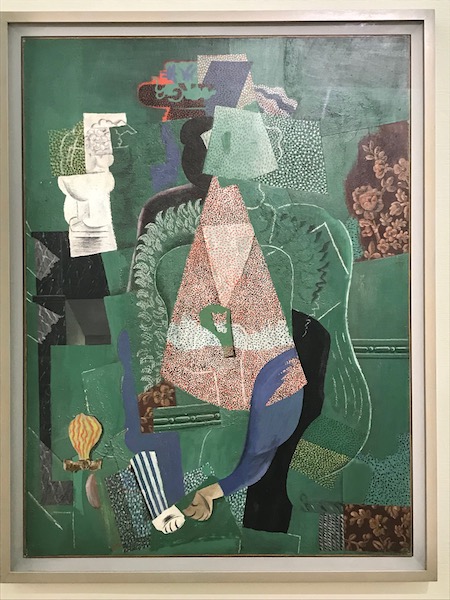
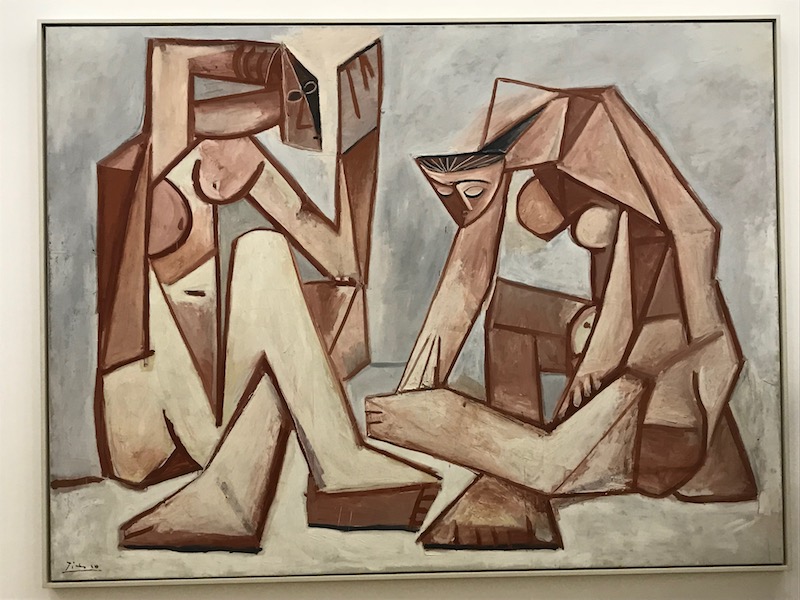
A painter that I hadn't really heard much of, but whom I seem to really like, is the Russian painter Vassily Kandinsky. Here you can see a progression from the 1908 semi-abstract landscape painting (first picture), to the 1912 painting "With the Black Arch" during this Blue Rider period, and finishing with the 1919 "In the Grey" painting during the period between 1914 and 1921 when he returned to Russia.
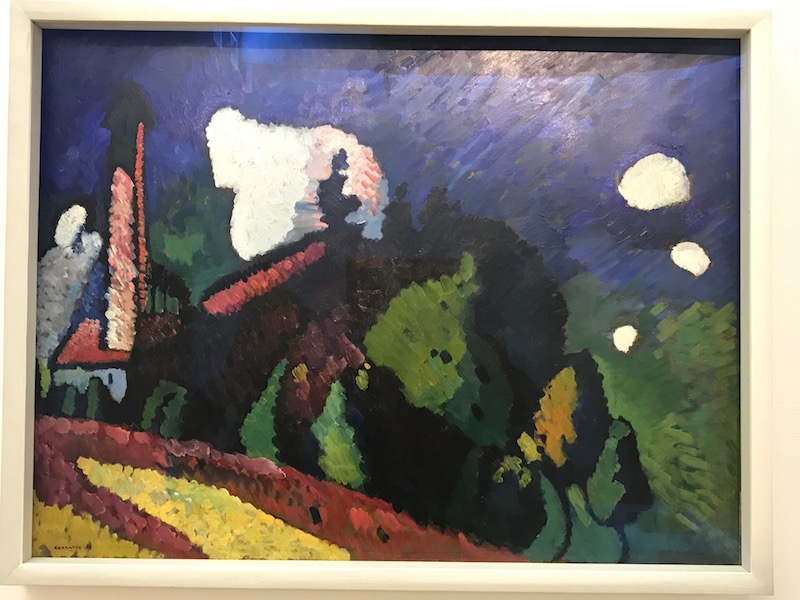

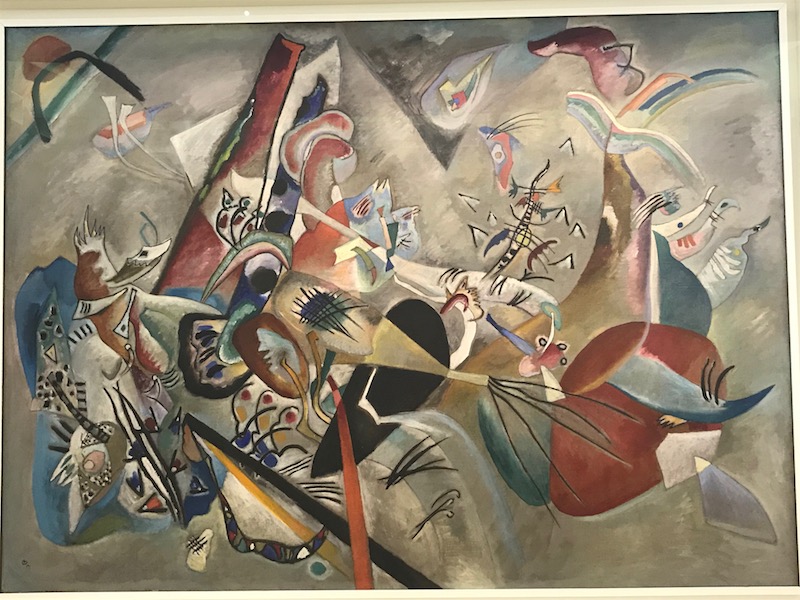
Jackson Pollock is an American painter and was a major figure in the abstract expressionist movement. This painting from 1943, is entitled "The Moon-Woman Cuts the Circle". There is an interesting analysis that talks about a half-circle moon and a knife in front of the moon image ... I'm not sure I actually see all of that ... I just think it is an interesting picture.

Our last "free" stop for the day was Sainte-Chappelle. We had been there before, but not for quite some time (yea, not that it changes much, right?). Sainte-Chappelle is a Gothic-style church on the Île de la Cité, which was a royal chapel within the medieval Palais de la Cité, the residence of the Kings of France until the 14th century. Since it was the Royal Chapel, it didn't need to be very large (which it isn't). While the structure and architecture and not all that impressive, what people come for is the glass ... it has one of the most extensive 13th-century stained glass collections anywhere in the world. I took multiple pictures of the various windows and some of the other decorations, and then a few pictures of the outside. If you visit, there is an audioguide that you can get which details (I think) every single window in the upper chapel, including 11 windows which go through the Old Testament, including scenes from the Book of Genesis, Exodus, Joseph, Numbers/Leviticus, Deuteronomy, Judges, Tobias, Job, Esther, David, and the Book of Kings.

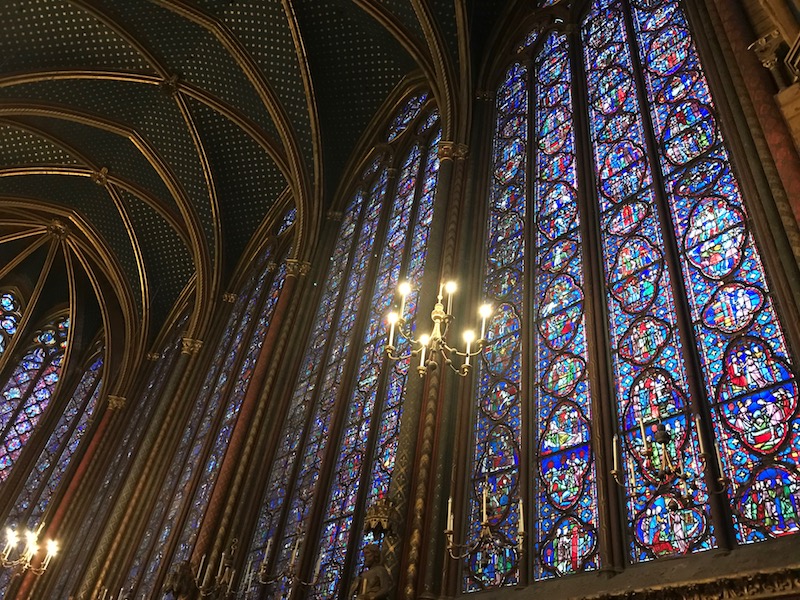


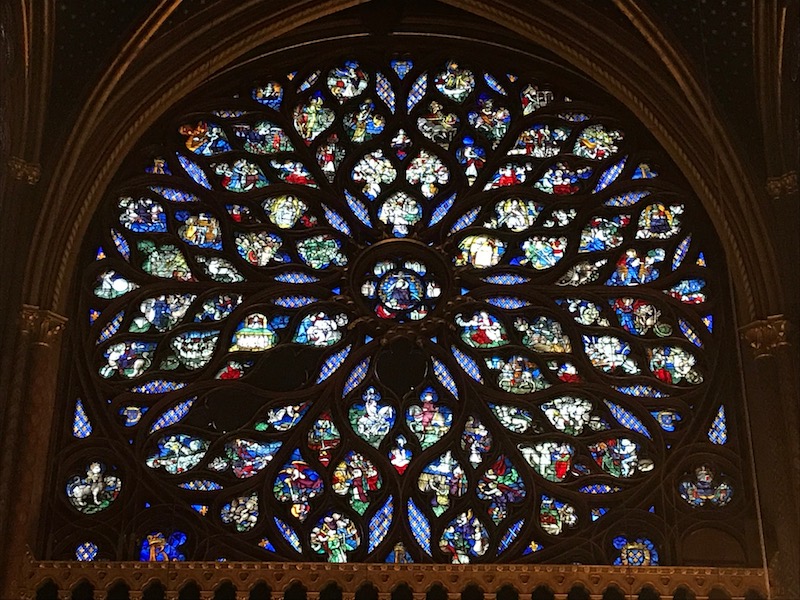

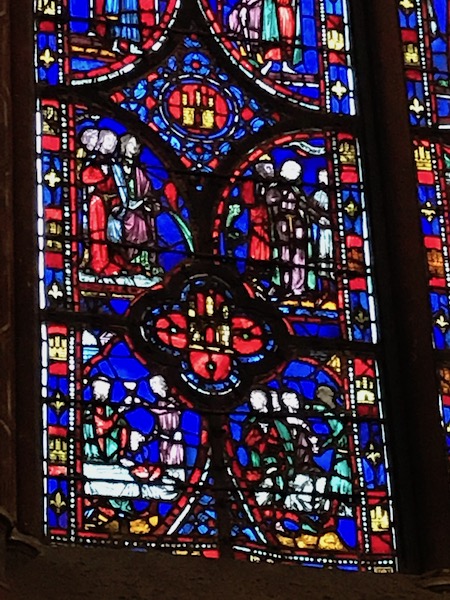

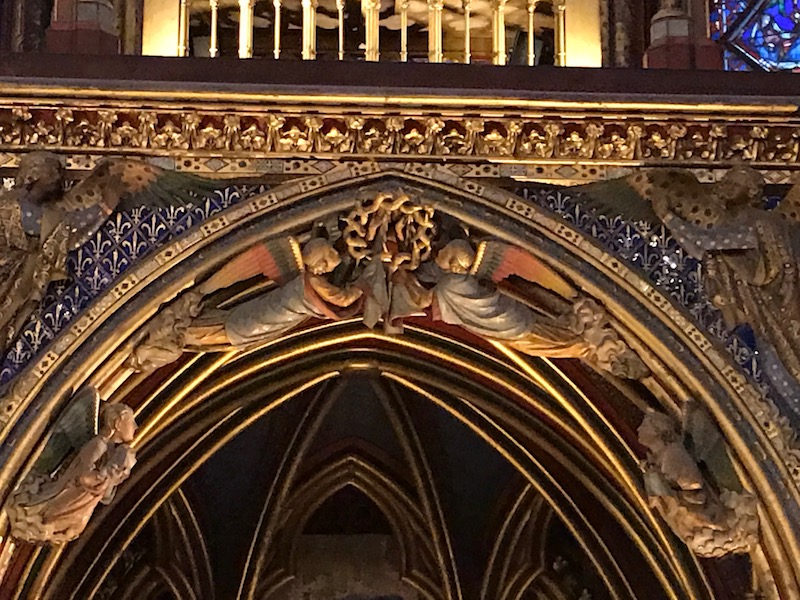


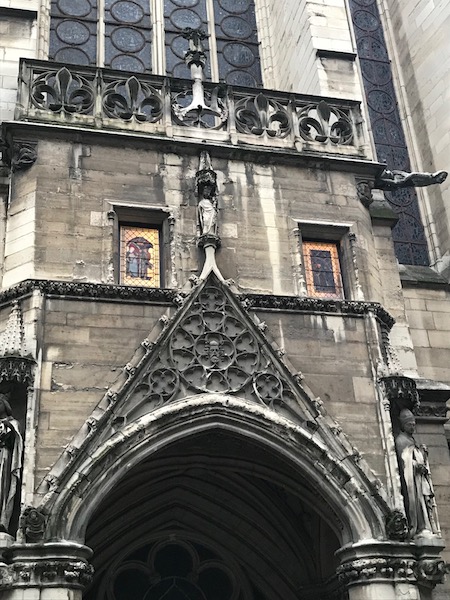
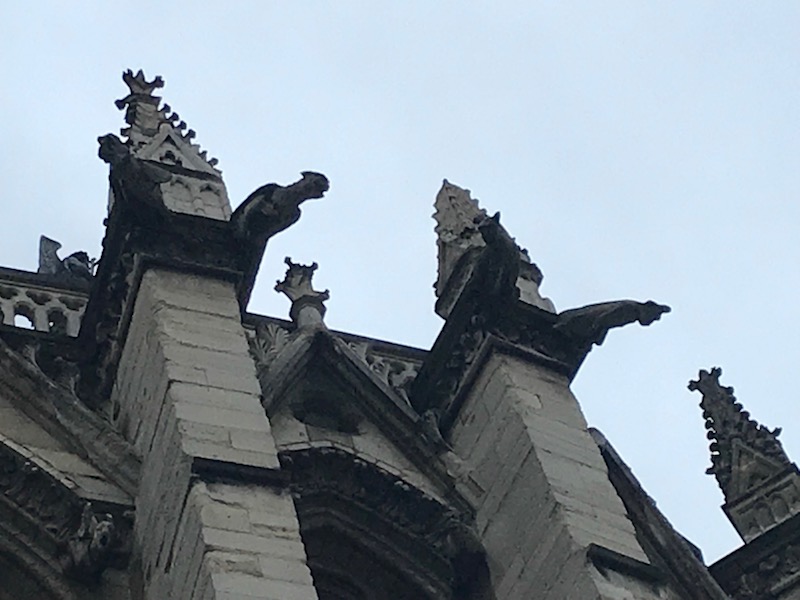
Tonight we dined at a restaurant called Poulette, which is located in the Etienne Marcel district. To me, the most impressive part was the decor, which was decidedly Art Nouveau/Belle Epoque. I absolutely loved the tile decorations!


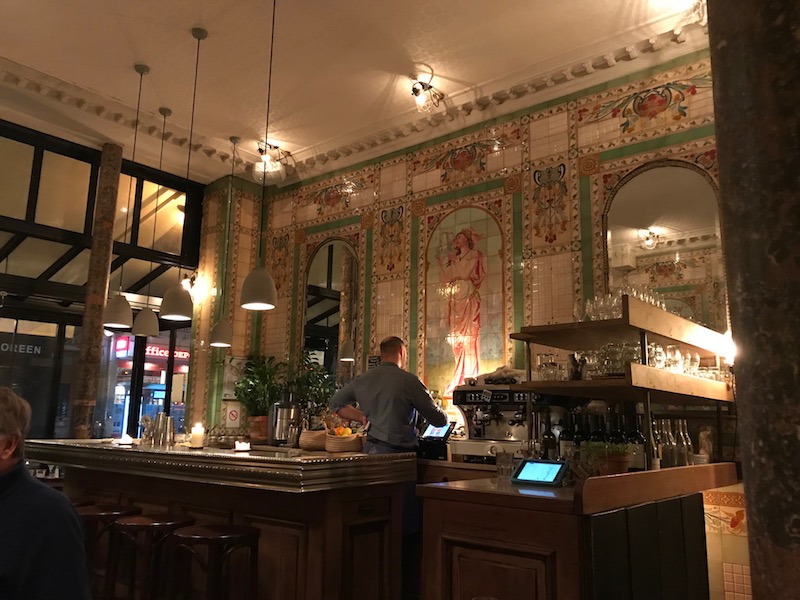
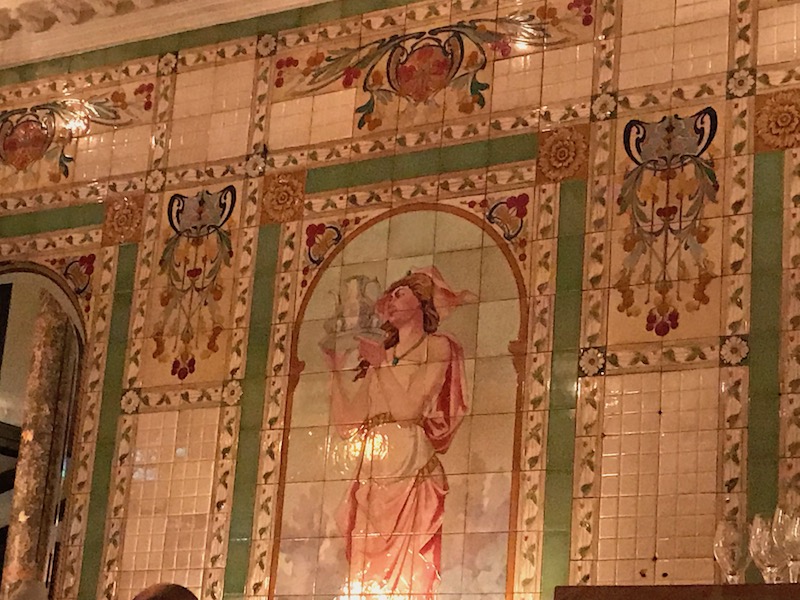
What did we have? Well, they are known for their steak-frites, so that is what we both ordered! We did start with an appetizer of leeks, which are very common during the winter months. Desserts included the poached pear (also very popular in the winter) and a Galette de Roi for the feast of the Epiphany in January. We saw the galettes in all of the boulangeries while we were in Paris and so we couldn't pass up the chance to have a mini-galette for dessert.
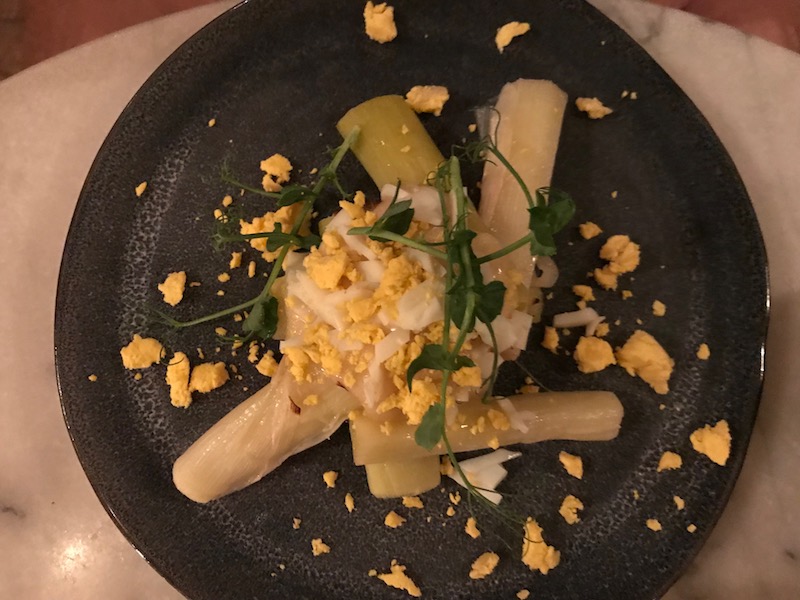



Continue to Paris 2018 Day 4